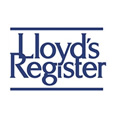Earning carbon credit is a complex business. It all begins with the Kyoto protocol. Your country needs to be a part of the protocol for your enterprise to even entertain the thought of carbon credits. Second, there should have been an eligible quantifiable reduction in your enterprise carbon footprint before you can even think of applying for the credits. Finally, your tax laws must ascribe value to your carbon credits.
To start with, going green also has a lot to do with your awareness of what it means to go green. Employers and employees must be conscious of the enterprise policy in context. They must be educated about what green really means and how it must be implemented across the organisation. Managers at different levels of the organisation must be encouraged to report on possible infractions of the policy and also come up with ideas on how carbon credits can be earned.
Carbon reduction must be measurable. Cloud computing is considered to be one sure methodology of proving that your enterprise is going green. But, carbon footprints, consequent upon computing in the cloud, are not very clearly quantifiable! Conscious efforts must be made to measure and quantify the carbon credits earned from cloud computing. Clearly defined and acceptable measures must be implemented at every level, and measurements must be tracked constantly to ensure that carbon credits earned are being accounted for, and your enterprise is moving towards the eligible levels for instituting an application for carbon credits.
Carbon saving activities must be definable. Carbon saving activities in cloud computing will gain definition, if you use energy saving devices in setting up your computing environment. Energy saving devices could be less energy consuming clients or air conditioners that use power sensibly. The source of energy itself must be green or a renewable energy source. Enterprises that use coal coke to power their generators cannot claim to be green!
Greening policies must be pervasive and all encompassing for carbon credits to pile up in your favour. The boundaries of your greening policy can extend beyond the enterprise and carbon credits can be earned by riding on greening policies of associates. Enterprises can ensure that they associate only with service providers who have policies in place for carbon footprint reduction. Else, it may defeat the very purpose of your greening policy and your efforts to compute in the cloud.
Backup Technology Limited is a globally trusted company, which provides simple, automatic, secure and encrypted cloud backup services. It is based in the UK, with a branch in the USA. For more information, please visit www.Backup-Technology.com




















